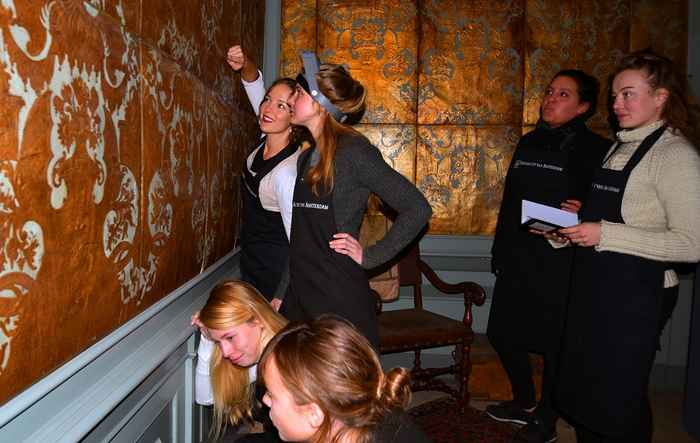Historic Interiors

Reconstructing history
At the beginning of the Master’s, particular attention is paid to the different historical decoration schemes and application techniques, first on wooden supports and later on stone supports. Using data from research carried out in situ and the study of various preparation methods from historical painting and other manuals, students acquire both theoretical and practical knowledge of the function, specific properties and manipulated appearance of a certain historical layer. This involves not only studying the stylistic and aesthetic aspects, but also the material, technical, historical and ethical aspects. As a result, students learn to recognise the relationship between materials and their characteristic damage phenomena.
Besides the practical sessions on site, the students regularly make reconstructions in order to gain a deeper understanding of the various techniques. Historical colour research is key in the first year of the Master’s programme. A number of other subjects that support the work of the conservator-restorer are also covered, such as safety in the workshop and on site, handling solvents, toxic pigments, equipment, and the use of various research methods in situ and in the laboratory.